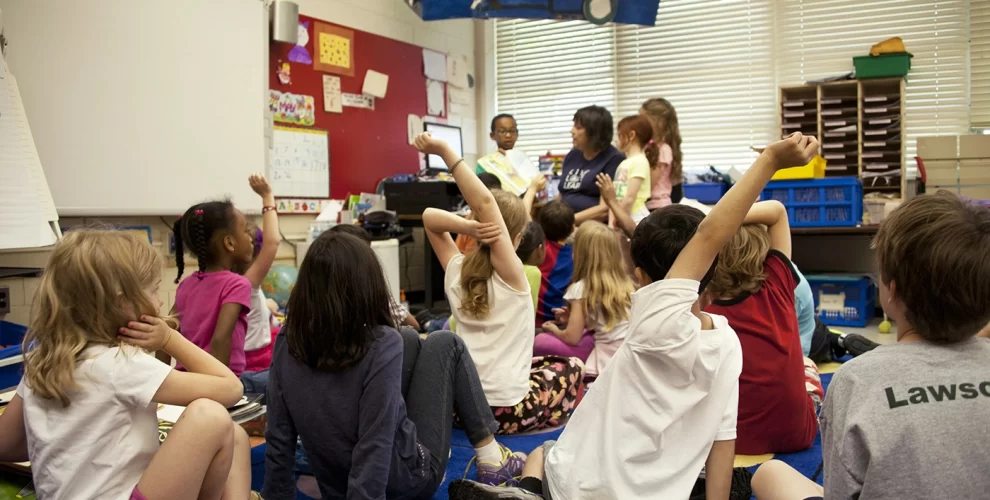School Climate and Culture

Assessing student success typically entails a focus on standardized test scores and academic performance. In ignoring school climate and culture, this approach provides an incomplete picture of the quality of teaching and learning. Further, more comprehensive assessments that do take school climate and culture into account rarely share back findings with the key stakeholders who can and must be part of climate and culture improvement efforts – including students themselves.
The Prichard Committee Student Voice Team’s student-led research contrasts with traditional, top-down school improvement research in which external researchers conduct “rigorous research” on educational problems, identify “what works,” and expect practitioners to use this knowledge to inform policy and practice (Tseng & Nutley, 2014).
Efforts to improve school climate are stunted because the stakeholders upon whom improvement most depends have not been involved in the learning process that helps them understand why their schools are struggling and what role they might play in improvement.
The Student Voice Team model assumes that deeper, more sustainable change inside schools must be driven by the most primary stakeholders, namely students and staff. Consequently, these stakeholders must be engaged in research design, data collection, analysis, and solution finding if they are expected to implement solutions to making school climates safer, more inclusive, and more engaging.
As a student:
On the micro level, get to know as many students and adults in your school as possible, especially those from different backgrounds than you. Help everyone in your building feel valued and visible. On the macro level, consider launching your own school climate audit, including a student and staff survey, classroom observations, and interviews. Consult with the Prichard Committee Student Voice Team or visit the National School Climate Center’s website to get a sense of the tools you can use and how to get started. Then, use the data you collect to create space in your school for a candid conversation about whether school is working for all students and if not, determine how you, as a school community, can ensure that it does.
As a parent:
Ask and observe for yourself whether and how students are supported beyond academics. What is the ratio of school counselors to students? Where do students go if they have mental health concerns? Are students and staff taught social and emotional skills? How does the school create a sense of community that values students from all backgrounds? Make it a point to express interest and concern about issues beyond grades and testing results to your school administrators. And if you want to join forces with parents from across Kentucky pushing for improved school climate and schools overall, check out the wealth of resources and training available to you through Prichard Committee’s Commonwealth Institute for Parent Leadership (CIPL).
As a community supporter of better public education:
Advocate for the value of a safe, inclusive, and engaging school that affirms every member of the school community beyond academic output. Invite students, particularly those from more marginalized backgrounds, into spaces where education issues are being discussed and intentionally solicit their feedback. Make integrating students into school board and school council discussions, educator professional development, policymaking and other education arenas normal and expected.




